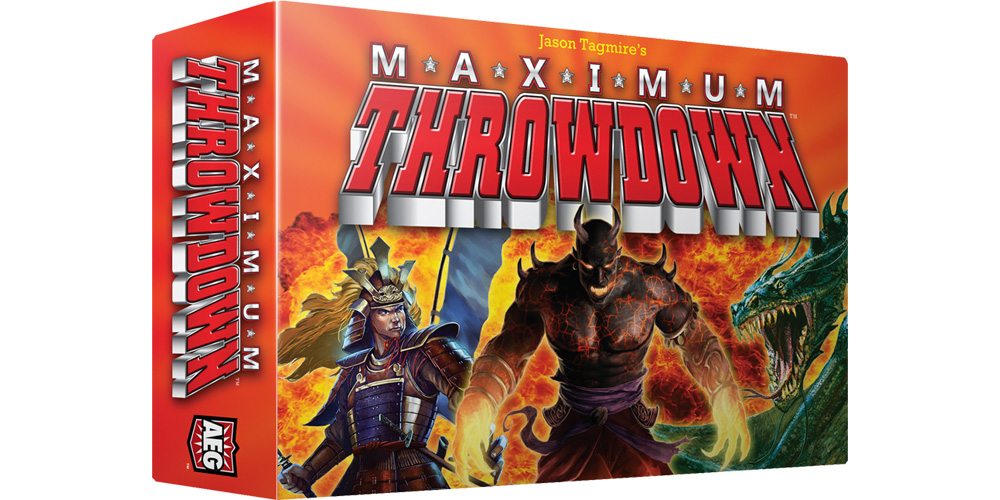At PAX East this year, I got to meet Jason Tagmire, the designer of Pixel Lincoln, a bizarre side-scrolling deck-builder featuring our 16th president and meat-based weaponry. He asked me if I wanted to try his prototype of Maximum Throwdown, a game that involves throwing cards. Oh, yeah. It was pretty awesome, though I was pretty terrible at it until we put a tablecloth down so that my cards wouldn’t slide all the way off the table.
Well, now you can try it for yourself: AEG releases Maximum Throwdown this week, just in time for Gen Con. It retails for $19.99, and is for 2 to 6 players. The packaging says ages 12 and up, but I’d say you can play it with anyone you trust to throw cards.
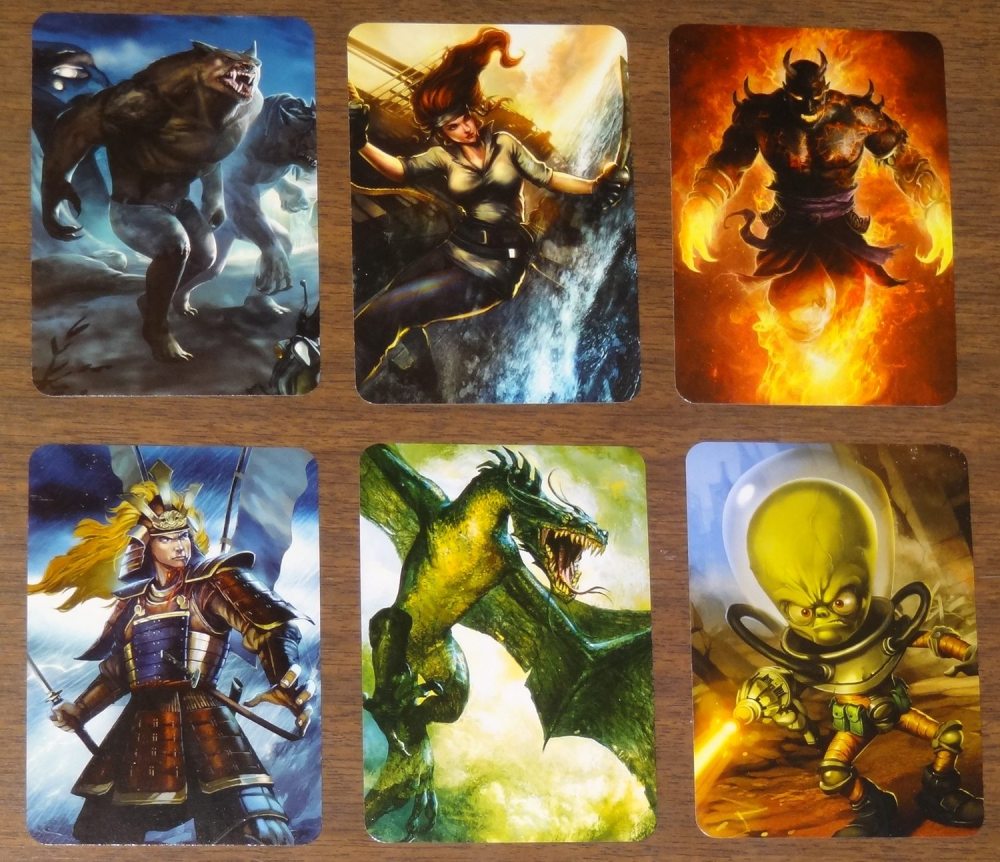
Tagmire’s prototype used extra large cards and featured characters like the Kraken, unicorns, and Bigfoot. The final version uses standard-sized cards and the characters are from AEG’s other games like Thunderstoone, SmashUp, Legend of the Five Rings, Nightfall, and Warlord. (Personally, I have to admit I preferred the simple character silhouettes of the prototype, but fans of AEG’s lines will probably appreciate the references.)
You get 90 Throwdown cards (6 decks of 15 cards each), 6 reference cards, and 6 starting location cards.
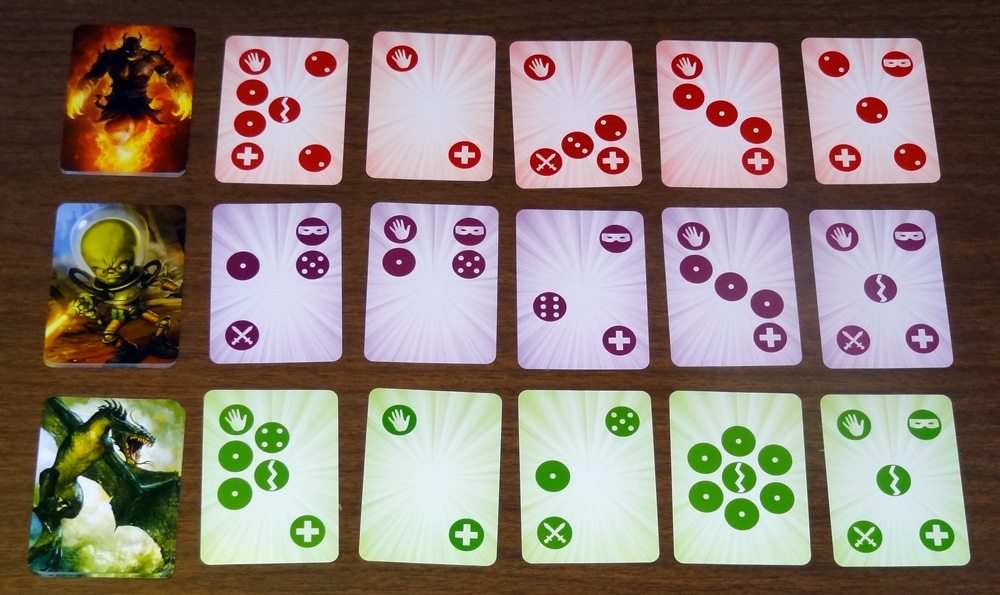
How to play
So here’s how it works. Each player gets a deck of 15 cards, which have a character on the back and various icons on the front. The decks all have a slightly different mix of icons and layouts, so the cards aren’t entirely equivalent. For instance, the fire djinni has a lot of the hand icon, which gives you extra throws. The alien has a lot of steal abilities (the thief mask), and the dragon has the most “break” icons.
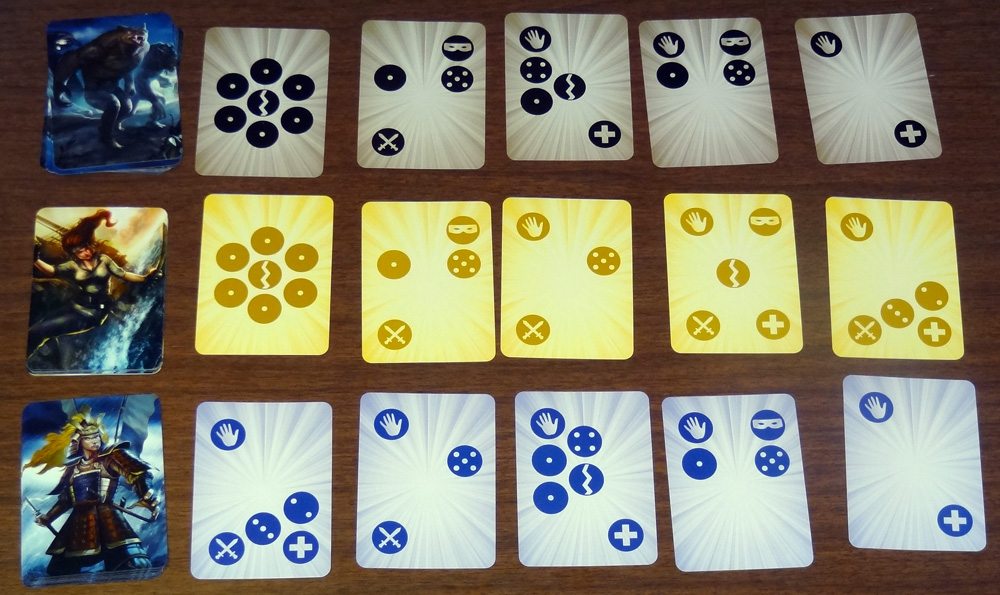
You start by laying out a few location cards on the table—these basically make up a starting target. You can use whatever layout and number of cards you like, but the smaller the target, the harder it will be to land your cards where they count.
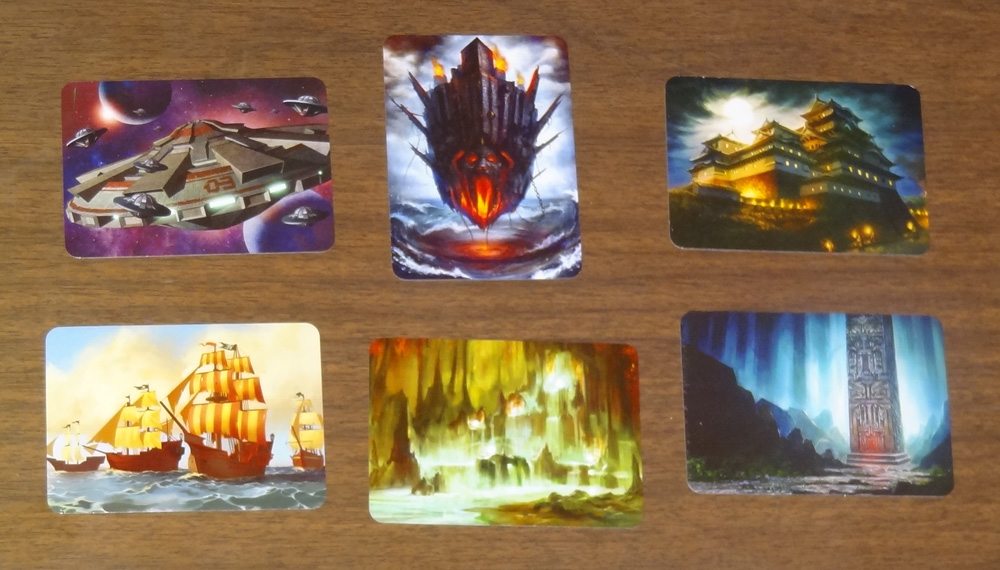
On your turn, first you evaluate your icons that are currently showing—but the entire icon has to be uncovered, or else it doesn’t count.
- Plus: Draw—draw an additional card from your deck
- Hand: Throw—throw one additional card from your hand (if available) or re-throw a card that missed
- Crack: Break—a card that misses can stay in play
- Thief: Steal—draw a card from an opponent’s deck and throw it onto the play area
- Swords: Attack—discard the top card of an opponent’s deck
- Dots: Points—For every six pips, you get one point
If you have enough pips showing, you score points. (You’ll need some way to keep score.) Then you resolve Attack and Steal icons. Note that with “Steal,” you can toss a card face-down to cover up opponents’ icons, or you can just purposely throw it so that it misses and gets discarded.
Finally, you draw one card, plus an additional card for each plus icon showing. Then you throw one card, plus an additional card for each hand icon showing.
When you throw a card, it must land so that it’s overlapping another card that’s already in play, either under or over it. If not, then it counts as a miss, and it gets discarded unless you have a “Break” ability. A card that lands face-down stays in play (if it didn’t miss) but its icons don’t do anything for you. Also, you’re supposed throw the card so that your arm doesn’t ever go over the play area. When we played this at PAX, we shoved three standard folding tables together, so that you really had to fling the cards to get them onto the target in the middle. Basically, you have to throw the cards. This isn’t Maximum Dropdown.
The game continues until everyone is out of cards. If you run out of cards before the game ends, you still get to score points and use Attack and Steal abilities as long as you have the right icons showing, but you’ll have no more cards of your own to add. Once everyone is out of cards, there’s one more scoring round, and the game ends. Player with the highest score wins.
The verdict
Maximum Throwdown, like FlowerFall, is kind of a ridiculous game—but ridiculous in an awesome way. I really enjoy dexterity games of all sorts—if it includes flicking, balancing, or throwing, count me in. So this game is right up my alley. You try to cover up your opponent’s icons while making the best use of your own. But of course it’s not just about planning a good strategy; you also have to have good aim … and a bit of luck.
I like the fact that the different characters have slightly different abilities — it’s not enough to give a huge advantage to any particular character, but everyone has their own types of advantages. You’ll have to come up with your own way to keep score, whether that’s with pen and paper or some app — not a huge deal, but I prefer games that are self-contained.
Overall, if you like dexterity games and a bit of over-the-top silliness, check out Maximum Throwdown. Play it at a convention and I guarantee you’ll have people coming over to see what’s going on. (Especially when determining first player: whoever shouts “Maximum Throwdown!” loudest gets to go first.)
Disclosure: GeekDad received a review copy of this game.
